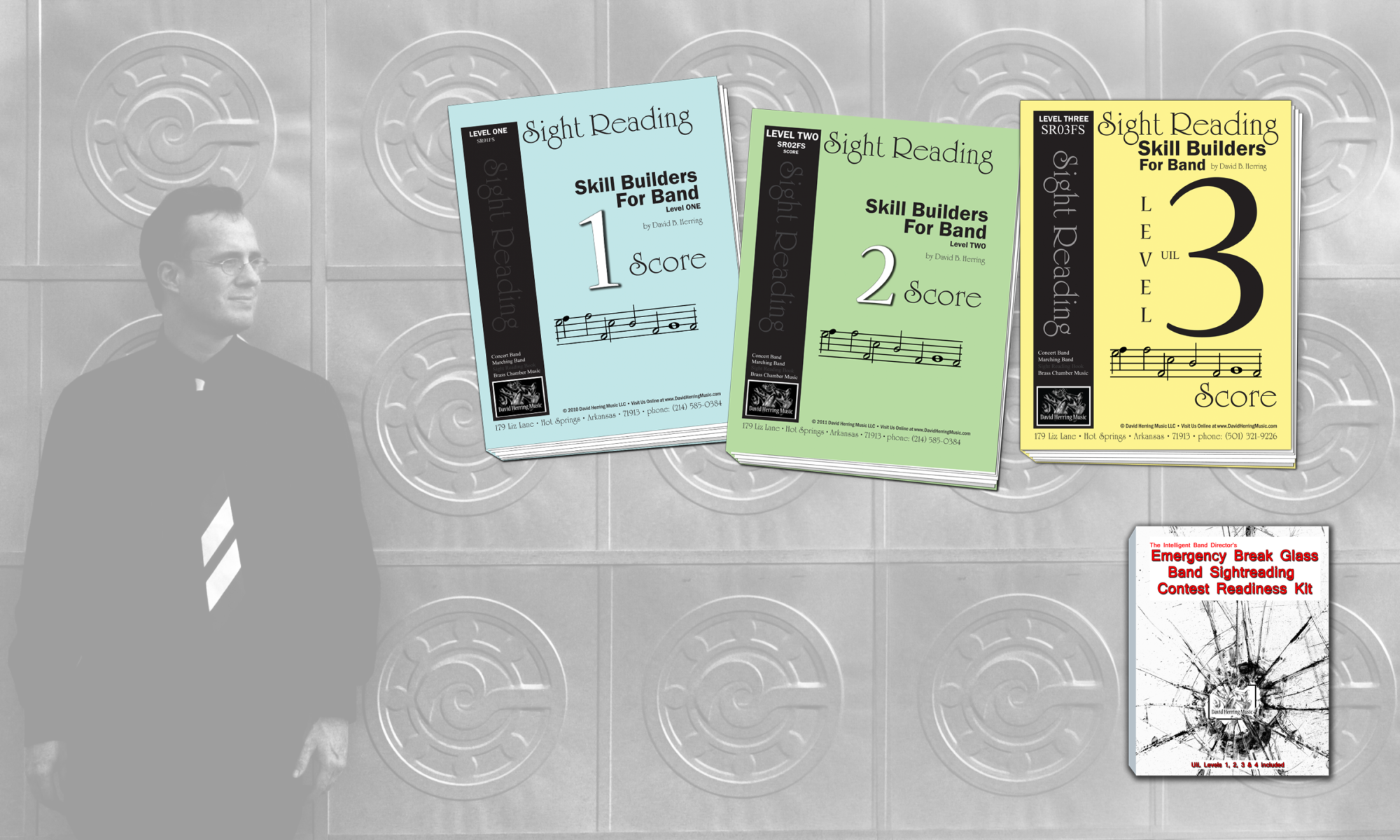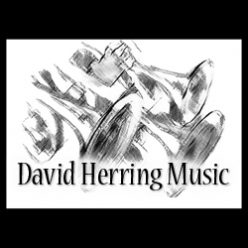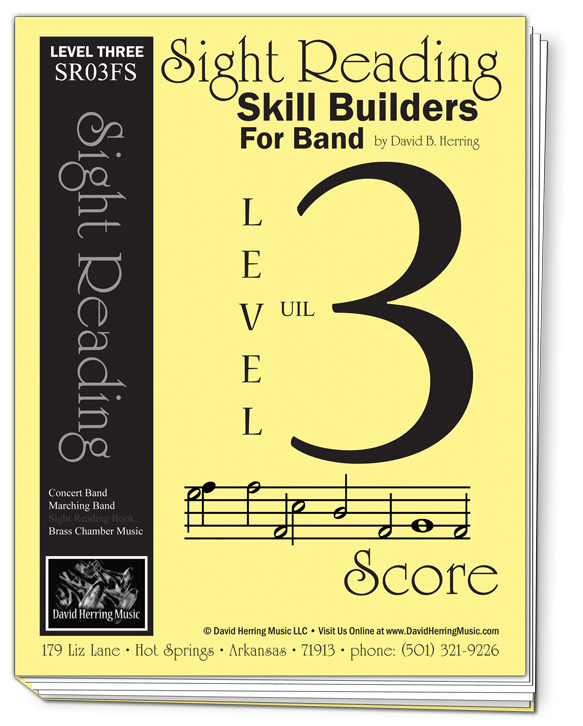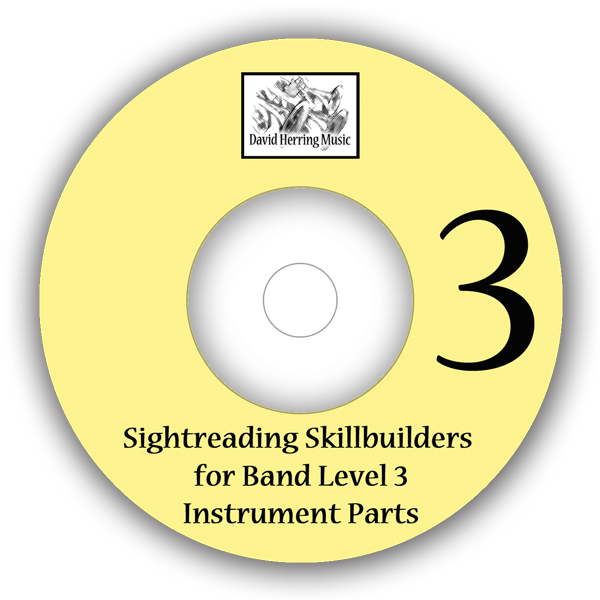David B. Herring Shares the secrets of the Level Three Sight Reading System
David shares, “When I began work on Sightreading Skillbuilders Level 3, I put a great deal of thought into utilizing the systems that had been so successfully established with Levels One and Two. I set forth to improve the methodology and structure so as to expand and address the new challenges faced with teaching Level Three.”

“I created something that would follow a similar difficulty path but would cover the sightreading concepts in a new and fresh way. With this framework in mind, the book is split up into 11 chapters with
each chapter adding a new concept for the students to learn and master.”
“Experience with my own students has taught me that the level of their sight reading skill varies. Keeping that in mind, I wrote the Level Three material so that less advanced students would be able to gain confidence while guiding them on to more difficult concepts, but at the same time providing engaging exercises and tunes for the more advanced sight readers, no matter where you start in the book.”
All students regardless, of sightreading skill level, will find this material useful and challenging.
Features
1) Increased number of parts. Adding a 2nd Flute/Oboe part and a separate Mallet part. Bassoon has its own part allowing for some woodwind only scoring.
2) Percussion: In addition to the typical snare and bass drum part, the auxiliary percussion part in the later chapters, features two different instruments to increase the number of voices that the band will hear. The mallet instrument will on occasion have a part that is completely independent of the wind parts.
3) In a slight departure from the Level One and Two books, I have increased the number of pieces (to 132) the pieces are a bit shorter allowing you to cover more material and concepts during a sight-reading session.
4) The 144 Rhythm Key Lines are multi purposed, starting first with a simple note pattern that covers the danger notes associated with the three keys (E/Eb – A/Ab) but then moving to independent rhythms, and reviewing time signature changes in the later chapters.
***Note Concerning Percussion
Although auxiliary percussion parts have specific instruments listed, one should be mindful of both logistics and what is needed by the musicians. Large amounts of time searching or gathering up the exact right instrument may, in some circumstances, be counterproductive. There are times that another instrument might be what the students need to be working with at that time instead of what is suggested in the music. The mallet part can be played with any of the standard mallet instruments. Rolls should be ignored by vibe or bell players.



